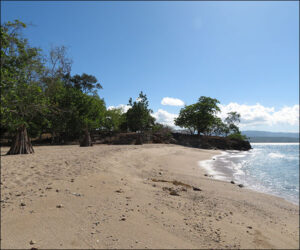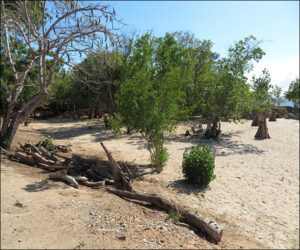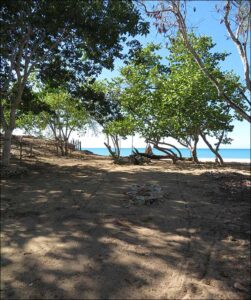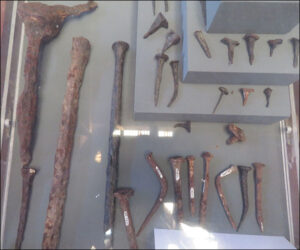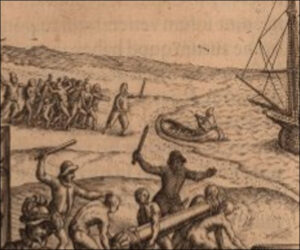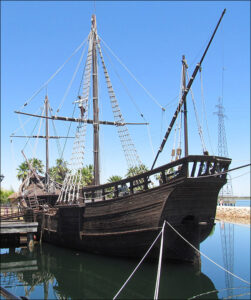Following the hurricane (see prior post), Columbus ordered Isabela’s shipwrights to construct two new caravels, the first ships so designed made in the Americas. He’d survived violent storms—during the return ocean crossing of the first voyage and the Cuban exploration of the second—aboard the Niña, and it served as the model.
As depicted in Columbus and Caonabó, the caravels were built in the small beach bordering the northern end of the settlement, largely using wood from the ships wrecked by the hurricane, as well as from ships arriving later that year that were destroyed by a second hurricane.
While often ignored in histories, enslaved Taínos contributed to the construction, forced to haul beams and fresh timber and other tasks requiring manpower. Columbus would name the first caravel completed the Santa Cruz, but sailors gave it the name that stuck—the India.
The first photos below show the beach and nails and spars used by the shipwrights, discovered by archaeologists during an excavation of Isabela’s remains. The engraving shows Taíno slave labor (site unknown), taken from Theodor de Bry, 1598, courtesy of the John Carter Brown Library, portion of rec. no. 0683-8 (contained in Columbus and Caonabó). The last photo is a reconstruction of the Niña, which lies berthed in the Wharf of the Caravels Museum in Palos, Spain.
